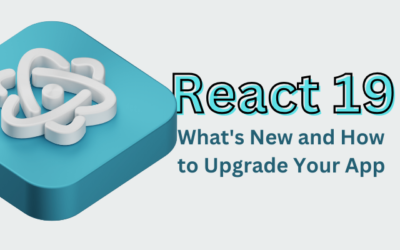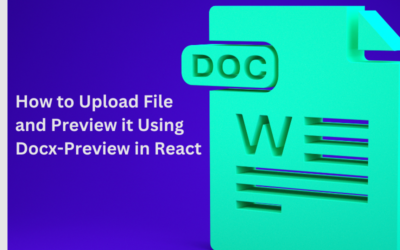In the ever-evolving world of web development, Progressive Web Apps (PWAs) have emerged as a revolutionary concept.
They combine the best of both web and mobile applications, offering users a seamless experience.
In this article, we’ll delve into the world of PWAs and explore how to transform an existing React app into a PWA.
Contents
Understanding Progressive Web Apps
Progressive Web Apps, or PWAs, are web applications that provide an app-like experience to users.
They can be accessed through web browsers but have the ability to work offline, push notifications, and load quickly.
PWAs aim to bridge the gap between web and native mobile applications, ensuring a smoother and more efficient user experience.
The Benefits of PWAs
- Improved User Experience: PWAs offer fast loading times and responsive design, resulting in an enhanced user experience.
- Offline Functionality: They work offline or in low-network conditions, making them incredibly versatile.
- Cross-Platform Compatibility: PWAs can run on various devices and platforms.
- Cost-Effective: Developing a PWA can be more cost-effective than building separate native apps.
- SEO Benefits: PWAs can be indexed by search engines, boosting your online visibility.
React Apps and PWAs
React, a popular JavaScript library, is often used for building interactive and user-friendly web applications. Combining React with PWAs can elevate your app’s performance and user engagement. Here’s how you can transform your React app into a PWA.
How to Make an Existing React App into a PWA
Transforming your React app into a PWA is a step-by-step process. Let’s break it down:
Step 1: Set Up Your React App
Before you can convert your app into a PWA, make sure you have a React app up and running.
Step 2: Install a Service Worker
Service workers are the backbone of PWAs. They cache your app’s assets and enable offline access. Implement a service worker into your React app.
npm install workbox-cli --save-dev
Then, in your React app, create a file named service-worker.js and add the following code:
// service-worker.js
importScripts("https://storage.googleapis.com/workbox-cdn/releases/7.0.0/workbox-sw.js");
workbox.routing.registerRoute(
new RegExp(".*"),
new workbox.strategies.NetworkFirst()
);
self.addEventListener("install", (event) => {
event.waitUntil(self.skipWaiting());
});
self.addEventListener("activate", (event) => {
event.waitUntil(self.clients.claim());
});
To register the service worker, add the following code to your React app’s entry file (usually index.js or index.js):
// index.js (or your entry file)
if ("serviceWorker" in navigator) {
window.addEventListener("load", () => {
navigator.serviceWorker.register("/service-worker.js");
});
}
Step 3: Create a Manifest File
A manifest file is crucial for PWAs. It contains metadata about your app, such as its name, description, and icons. Users can install your PWA on their home screens, just like a native app.
{
"short_name": "Your App Name",
"name": "Your App Name",
"description": "A description of your app",
"start_url": "/",
"display": "standalone",
"background_color": "#ffffff",
"theme_color": "#000000",
"icons": [
{
"src": "/icon.png",
"sizes": "192x192",
"type": "image/png"
}
]
}
Step 4: Enable HTTPS
PWAs require a secure connection. Make sure your React app is served over HTTPS to guarantee data security and reliability.
Step 5: Offline Capabilities
Configure your PWA to work offline. Users should be able to access certain content even without an internet connection.
Step 6: Optimize Performance
Enhance your PWA’s performance by optimizing images, code, and other assets. A fast-loading app leads to happier users.
Testing Your PWA
Before launching your PWA, thoroughly test it on various devices and browsers to ensure it functions flawlessly.
Deploying Your PWA
Once you’re satisfied with your PWA, deploy it to a hosting platform or your server to make it accessible to users.
Conclusion
Progressive Web Apps are transforming the way users interact with web applications. By combining the power of React with the capabilities of PWAs, you can provide your users with an exceptional experience. Follow the steps outlined above to convert your React app into a PWA, and watch as your app reaches new heights.
FAQs
1. Are PWAs compatible with all browsers? PWAs are supported by most modern browsers, including Chrome, Firefox, Safari, and Edge. However, they may have limited functionality in some older browsers.
2. Can I convert any web app into a PWA? In theory, you can transform any web app into a PWA. However, the ease of this conversion depends on the complexity of your app and the technologies used.
3. What is a service worker, and why is it essential for PWAs? A service worker is a script that runs in the background of a web page and handles tasks like caching, push notifications, and offline functionality. It’s crucial for enabling PWA features.
4. Do I need programming skills to create a PWA from a React app? Yes, some programming skills are required to set up a service worker, create a manifest file, and optimize your app. However, numerous resources and libraries can assist you in this process.
5. Is there a significant difference in performance between a PWA and a traditional web app? PWAs are known for their better performance, faster loading times, and offline capabilities compared to traditional web apps. However, the actual performance may vary depending on how well the PWA is optimized.






0 Comments